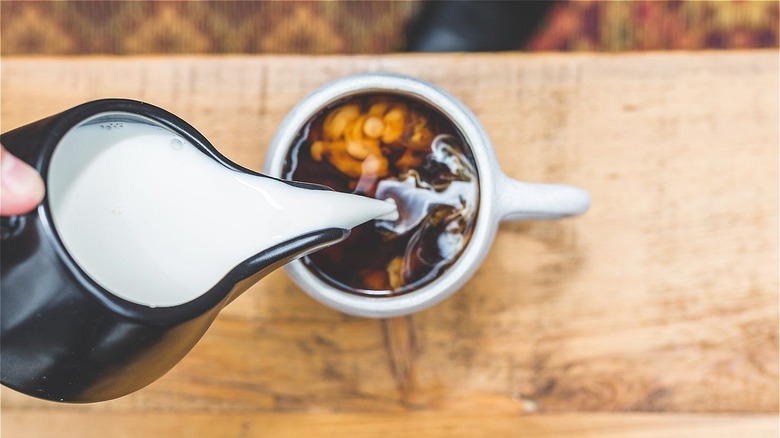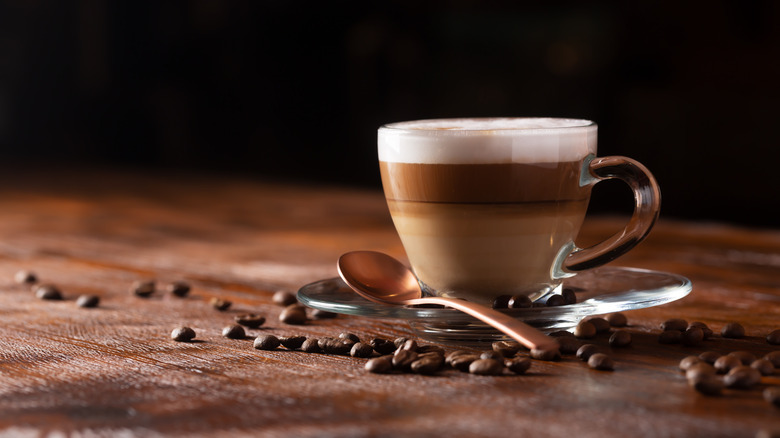Is There A Difference Between Café Con Leche And Café Au Lait?
With so many brewing techniques and different ways to combine milk, espresso, and rich coffee flavors, the possibilities are endless for java lovers. You might grab a creamy latte to start off your mornings, or maybe you like a stronger cup of joe with a shot or two of espresso to stay alert throughout the day.
Lattes are the more milk-heavy option when it comes to drinking coffee and usually have a 1:2 ratio of espresso to milk. Adding milk to coffee dilutes the bitterness of the espresso and create a sweet blend of flavors that's also more filling than coffee sans milk. Then there's cafe con leche, which means "coffee with milk." Based on the name itself, you might be inclined to think cafe con leche also has more milk than coffee in it, but it actually has an equal mixture of milk and espresso.
Cafe con leche originated in Spain, but it's the go-to coffee of choice in other Spanish-speaking countries as well. The French version of this popular drink is the cafe au lait, which also translates to "coffee with milk." While these two types of coffee blends are similar in name, there are a few key differences in how each is brewed and what ingredients distinguish them. It's all in the technique.
The difference is in the way the milk is prepared
The first difference between cafe con leche and cafe au lait can be found in their individual recipes. A cup of cafe con leche traditionally has espresso mixed with milk, while its French variation usually blends the milk with drip coffee instead of espresso. Besides the ingredient swap, baristas will also prepare the milk differently for each.
Scalding the milk is the method used when crafting a deliciously rich and creamy cafe con leche, which is done "by heating to just under its boiling point with a steam wand," according to Perfect Daily Grind. On the other hand, rather than scalding the milk, cafe au lait will have steamed milk, giving you just the right amount of foam to make every sip a smooth and frothy treat.
Depending on where your travels take you, you may notice that each drink could be served differently. It's normal for both to be served in your average coffee cup in America, but in France, "cafe au lait is typically served in a small bowl because it provides easier dipping for croissants that the French pair with their coffee," notes We Crave Coffee. Enjoying a caffeine-infused, piping hot cup of coffee might look a little different around the world, but the universal satisfaction when taking that first heavenly sip of the day will always be there.

